Living fossils of plants and animals showcase species surviving, mostly unchanged, for many millions of years. They capture changes on the planet that would otherwise be unknown. What are the 8 oldest plant species in the world still alive today? Keep reading to find out!
The 8 Oldest Plant Species in the World
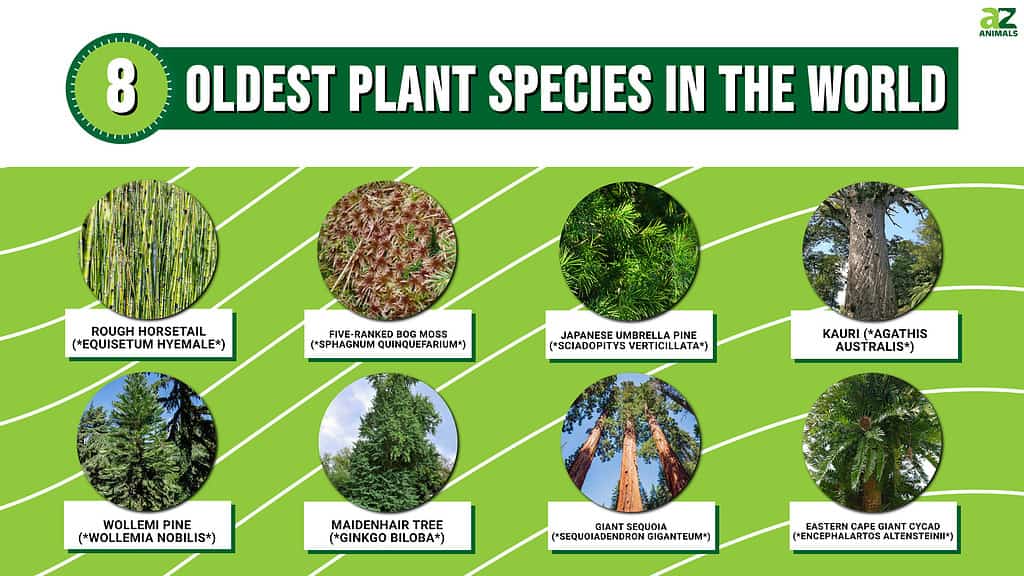
1. Rough Horsetail (Equisetum hyemale)
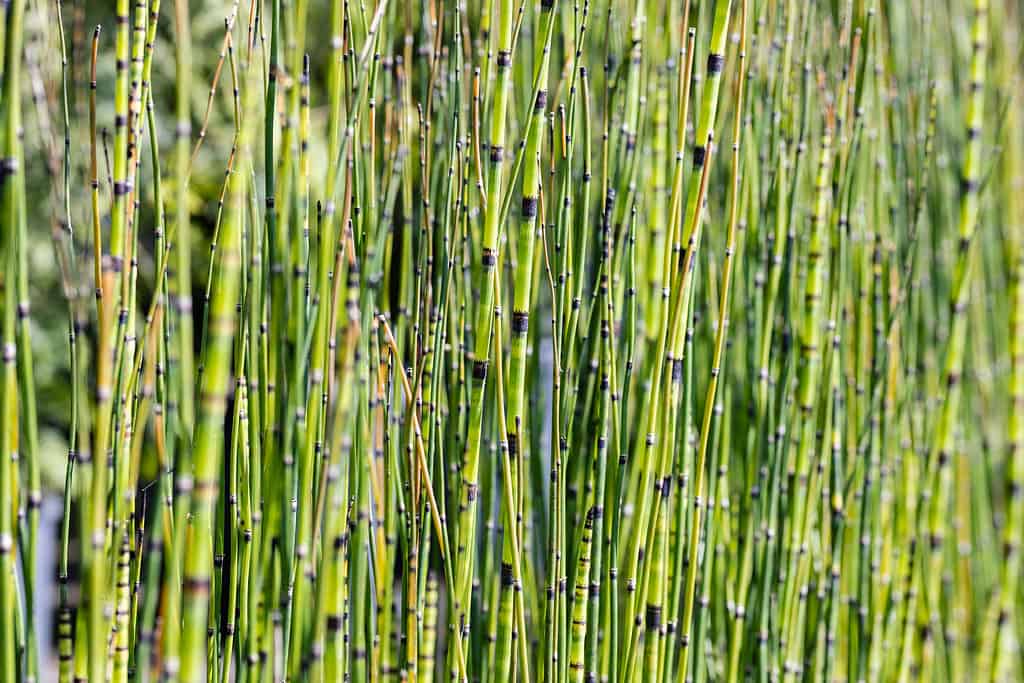
Rough Horsetail has a fossil record going back 150 million years.
©Fabrizio Guarisco/Shutterstock.com
Equisetum hyemale, a common scouring rush, is one of a handful of horsetail species. They have a fossil record going back 150 million years. Some extinct relatives of modern horsetails were over 100 feet tall.
These whorled perennials are evergreens because they stay green all winter. These horsetails are found in Europe, Asia, and North America. They were originally used for venereal disease cases and as a diuretic by Indigenous Peoples of the Northwest Plateau in America.
It’s a common ornamental plant used throughout the world. It’s especially appropriate for tight urban spaces because of the plant’s small and upright appearance. However, it easily escapes gardens and is now an invasive species in Australia and South Africa.
2. Five-Ranked Bog Moss (Sphagnum quinquefarium)
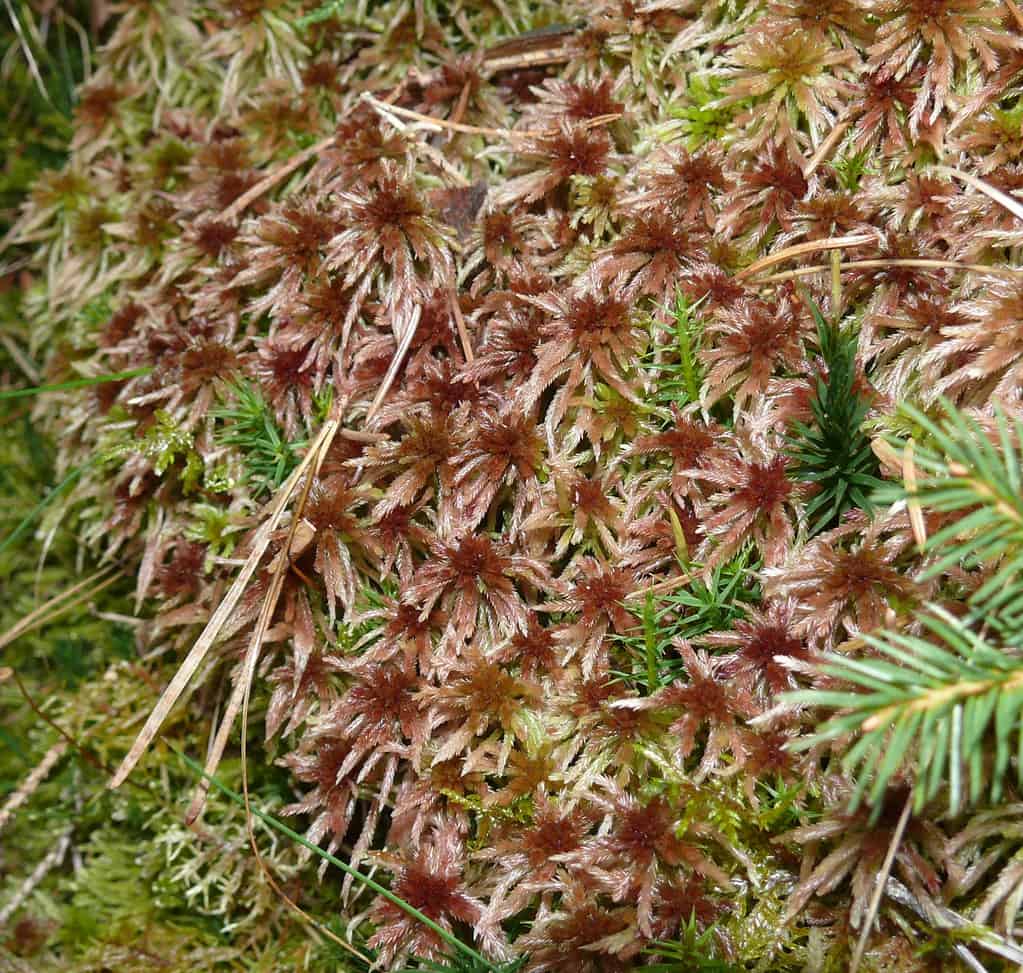
Five-ranked bog moss, which dates back 319 million years, is often sold for terrariums.
©Bernd Haynold / CC BY-SA 3.0 – License
Five-ranked bog moss is a peat moss with direct ancestors that go as far back as 319 million years. It’s often sold as moss for terrariums because it has red stems with green tops. It does well in environments that are high in humidity, but it does require good drainage.
This plant creates peat as it dies and forms stagnant organic matter in wet environments. This forms peat bogs, which are the basis of any ecosystem. Bogs tend to be low in oxygen, so there aren’t many fish or microbes in the water.
Mosses do not have a complex vascular system; nutrients are passed from cell to cell. They can absorb massive amounts of water, making them invaluable in floodplains. Bog mosses also help absorb excess runoff.
3. Japanese Umbrella Pine (Sciadopitys verticillata)
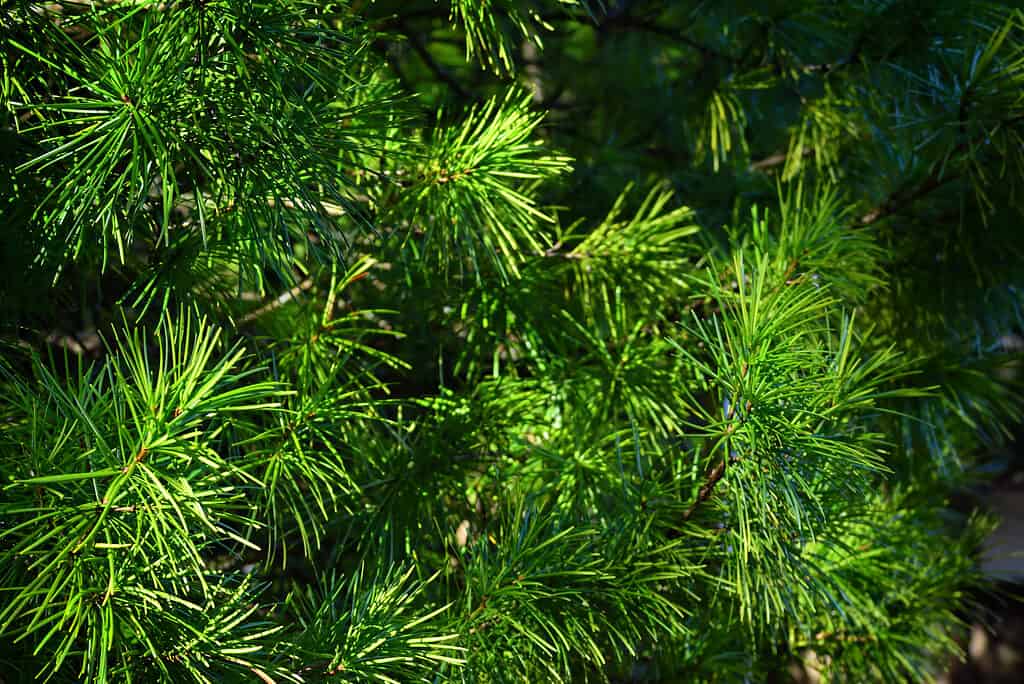
Japanese umbrella pine or Koyamaki tree.
©smshoot/Shutterstock.com
This pine tree, also called koyamaki, are ancient conifers with a fossil record going back at least 200 million years. It has no close living relatives.
These evergreens grow up to 80 feet tall. The needles on this pine are unique in that there are at least 12 per node, forming a whorl.
The direct ancestors of this tree lived in vast forests that covered North America, Asia, and Europe. Today, this tree’s only suitable ecosystem is the cloud forests, which stand in central japan at 1,500 and 3,00 altitudes.
4. Kauri (Agathis australis)
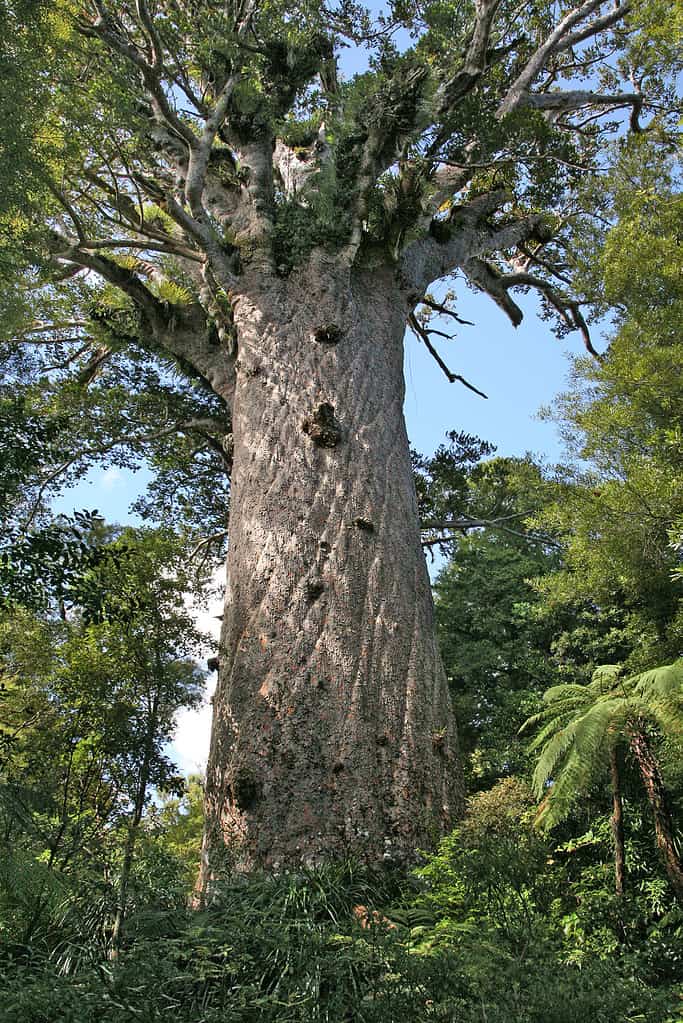
Kauri trees thrived between 140 to 66 million years ago. Their lifespan can go up to 2,000 years.
©W. Bulach / CC BY-SA 4.0 – License
These trees evolved less than 200 million years ago and experienced their heyday between 140 and 66 million years ago. Kauri are evergreen trees, and Agathis australis are the largest of the kauri.
These trees are capable of living for 2,000 years. They’re also tall and wide, with heights above 160 feet.
Historically, kauris grew worldwide; however, they’re now found in the wild only in New Zealand. They thrive in rainforests and mountainous land, preferring year-round warm weather.
During Gondwana’s existence over 50 million years ago, certain insects and fungi evolved and took advantage of the kauris in the huge forest on the supercontinent. Some of these fungi and insects have persisted alongside the surviving Kauri species.
5. Wollemi Pine (Wollemia nobilis)
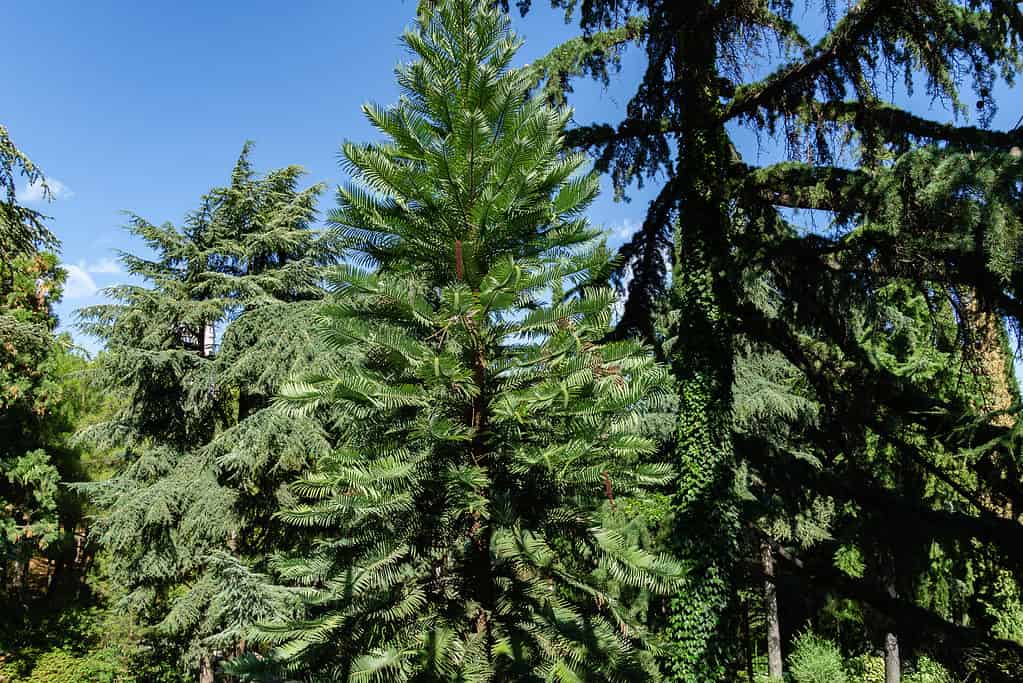
Wollemi Pine.
©Marinodenisenko/Shutterstock.com
The Wollemi pines have ancestors dating back 200 million years. It was thought that they were all extinct until one was discovered outside of Sydney, Australia, in 1994. Before this discovery, scientists believed Wollemi pine had been extinct for over 2 million years.
They’re tall trees that grow well over 100 feet in height. They’re also long-lived, with some individuals being over 1,000 years old. They were part of the massive forests on Gondwana that were fractured when the continents broke up.
This tree is a clonal species meaning that the same root-like system creates new trunks as needed. The most recent tree is around 450 years old, though the root system is over 1,000 years old.
It’s postulated that this same underground root system has been cloned for over 60 million years. However, this isn’t confirmed yet as research is still underway.
These pines are going extinct in the wild, but significant conservation efforts have been undertaken. Their demise in their natural habitats may be unavoidable because they succumb to a specific mold easily.
However, conservation efforts focused on propagating this species worldwide have seen it successfully introduced as an ornamental tree. In Australia, it’s popular as a potted Christmas tree.
6. Maidenhair Tree (Ginkgo biloba)
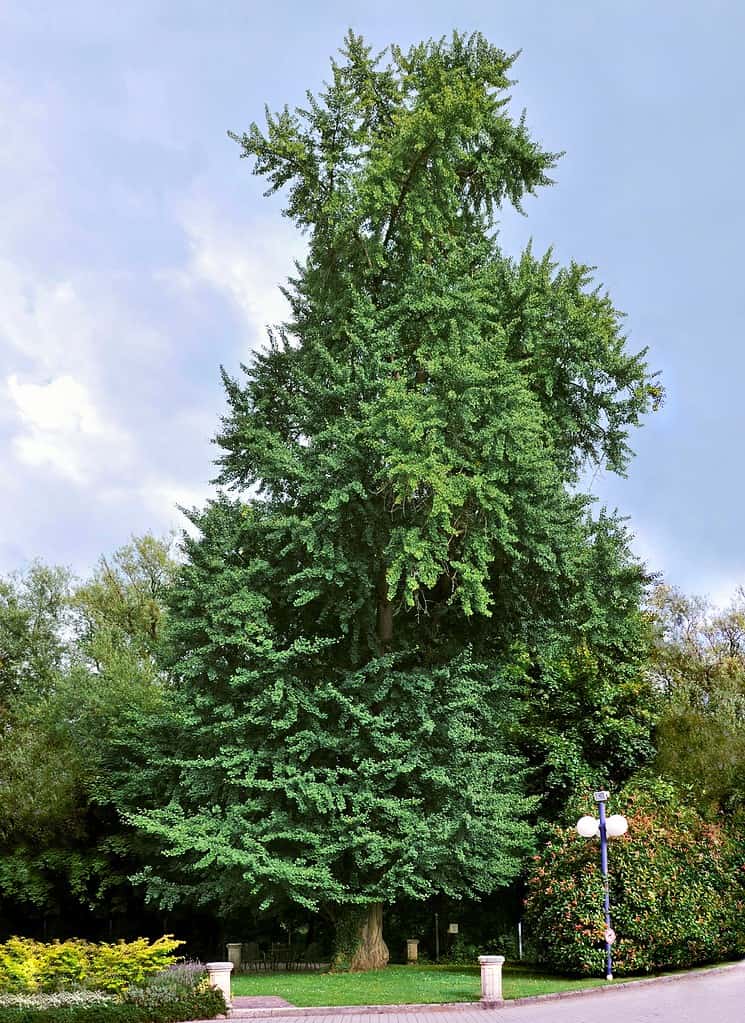
Maidenhair trees have fossil records that date back over 200 million years.
©EecherplazGinkgo06.jpg: Cayambe / CC BY-SA 3.0 – License
Maidenhair trees, also called ginkgos, are ancient trees that live long. They have a fossil record that goes back over 200 million years. They’re the only plant alive from their subclass and beyond.
Ginkgos are the only extant link between conifers and ferns. While there are only a few isolated pockets of this tree in the wild, they’re a popular landscaping tree in urban areas.
7. Giant Sequoia (Sequoiadendron giganteum)
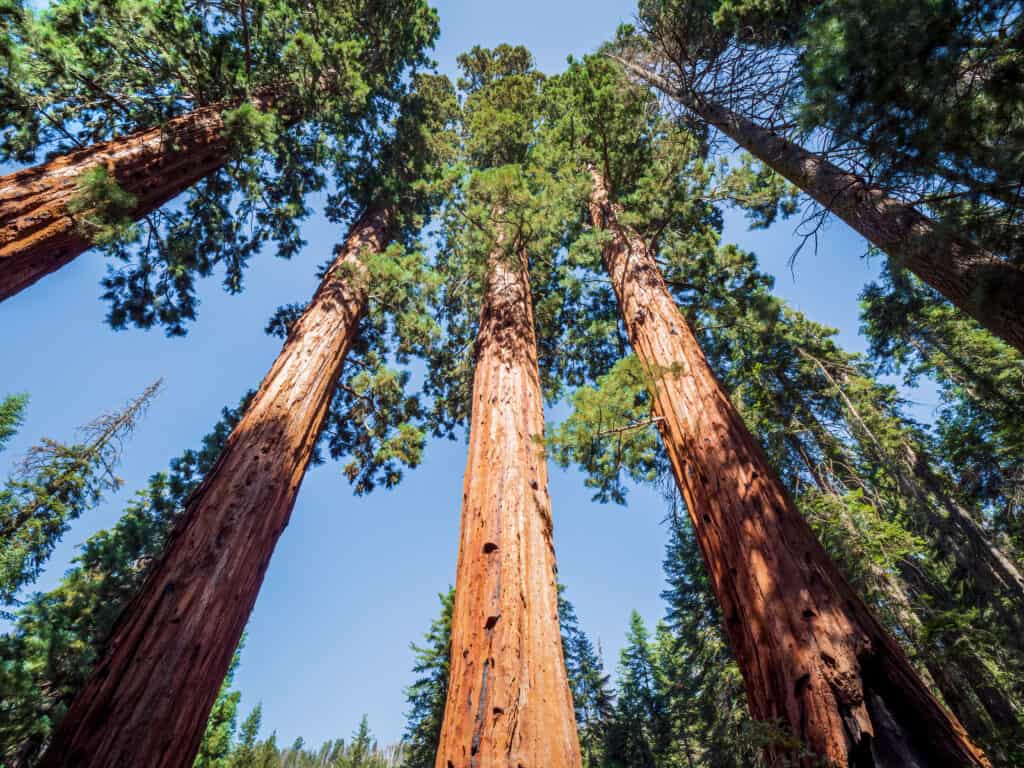
The giant sequoia is the only extant species in the Sequoiadendron genus.
©arkanto/Shutterstock.com
Sequoias came into existence around 200 million years ago. They were the main type of tree in Europe and North America 35 to 180 million years ago.
When their reign was strongest, giant sequoias enjoyed more fertile soil in a wetter environment than today. They also thrived with more atmospheric carbon dioxide and a warmer overall climate.
As the earth dried and cooled, megaflora died off like giant sequoias. Today, giant sequoias are only found in specific locations in the western Sierra Nevada of California.
8. Eastern Cape Giant Cycad (Encephalartos altensteinii)
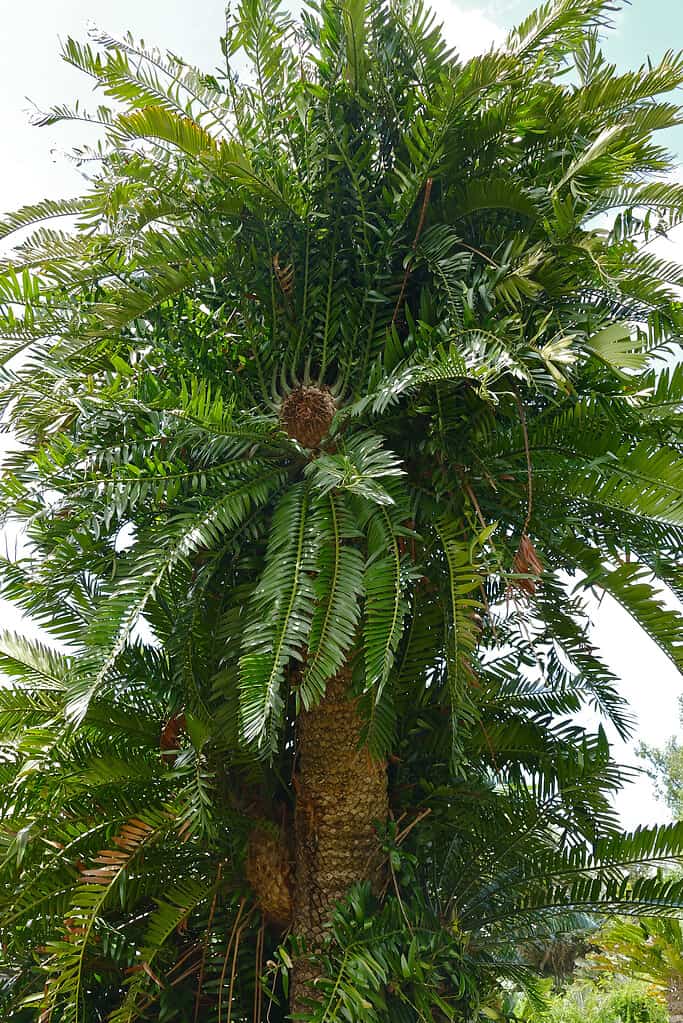
An Eastern Cape giant cyad at Kirstenbosch National Botanical Garden in Cape Town, South
Africa
.
©Bernard DUPONT / CC BY-SA 2.0 – License
With a fossil record going back 250 million years, the Eastern Cape giant cycad also lives long. A few have reached 2,000 years of age. Cycads were the first plants to produce seeds.
One specimen in London is the oldest potted plant in the world and dates back to 1775. It can be found at the Kew Gardens in a Palm House.
Summary of the 8 Oldest Plant Species in the World
| Rank | Plant Species | Age |
|---|---|---|
| 1 | Rough Horsetail (Equisetum hyemale) | 150 million years old |
| 2 | Five-Ranked Bog Moss (Sphagnum quinquefarium) | 319 million years old |
| 3 | Japanese Umbrella Pine (Sciadopitys verticillata) | 200 million years old |
| 4 | Kauri (Agathis australis) | 200 million years old |
| 5 | Wollemi Pine (Wollemia nobilis) | 200 million years old |
| 6 | Maidenhair Tree (Ginkgo biloba) | 200 million years old |
| 7 | Giant Sequoia (Sequoiadendron giganteum) | 200 million years old |
| 8 | Eastern Cape Giant Cycad (Encephalartos altensteinii) | 250 million years old |
The photo featured at the top of this post is © smshoot/Shutterstock.com
Thank you for reading! Have some feedback for us? Contact the AZ Animals editorial team.






